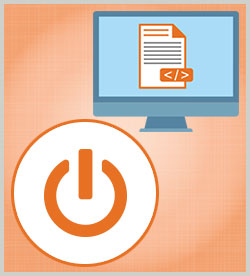Introducing Java EE - start the course
- introduce Java EE technology group and the requirements of enterprise applications
- describe enterprise application infrastructure technologies with separation of logic from services, and describe Java EE profiles
- define Java EE technology specifications and how to access them and describe how they define APIs and also in some cases services
- describe the Java EE requirement for a tiered architecture, the N-tiered model, and Java EE tiered architecture
Development Tools and Servers - describe the role of Java EE servers and the available implementations
- describe the considerations for selecting a Java EE server and describe the benefits of the GlassFish server
- describe the role of an IDE and list some of the IDEs that support Java EE development
Development Process - describe the Java EE development process and the steps involved
- describe Java EE containers and components
- describe Java EE component state, properties, encapsulation, and proxies
Packaging Java EE Applications - describe the role of and different types of Java EE archive files including WAR and EAR files and list the web components in a WAR file
- describe the use of deployment descriptor files in Java EE applications and list some vendor-specific deployment descriptors
- install the GlassFish server from the NetBeans IDE
- write a simple test application in NetBeans and deploy it to GlassFish
JavaBeans - describe JavaBeans and how they can be used in Java EE applications
- describe the considerations for creating and working with JavaBeans
Logging - describe Java logging and logging frameworks
- describe how to use the java.util.logging.Logger class in Java EE applications
- describe logging handlers in Java EE applications
- referencing the GlassFish log service, describe how logging is configured and logs viewed for Java EE applications
- create a Logger instance and add it to a Java EE application
Annotations and Method Chaining - describe and contrast the use of annotations with deployment descriptors in Java EE applications
- describe the different types of annotations and how they are currently used in Java EE 7
- describe annotation elements, placement, and retention in Java EE applications
- describe method chaining and how it is used by JAX-RS
Practice: Working with Loggers - practice creating and working with loggers in a Java EE application
|


